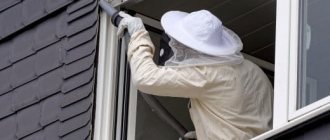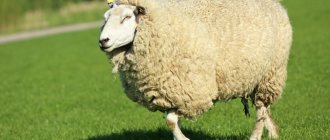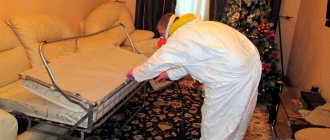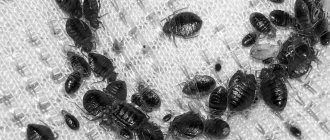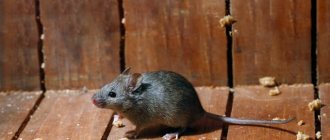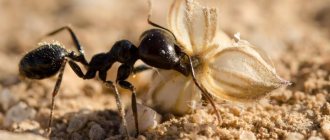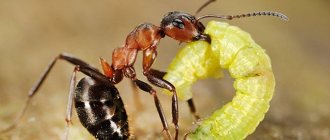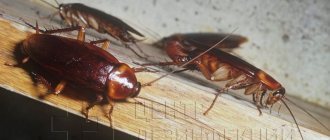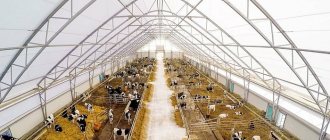Disinfection on a farm in animal husbandry is a set of measures to create a favorable environment for animals in order to minimize/eliminate the risks of infection of animals with pathogenic organisms and parasites. In addition, disinfection and its measures apply to the entire livestock complex: animal premises, service personnel, auxiliary buildings, and the animals themselves are subject to sanitation. All employees of the enterprise are required to monitor the state of the sanitary situation, and areas responsible for this area of work are also appointed.
Another important goal of disinfection is to reduce the risk of disease transmission from animals to humans. The implementation of the designated tasks forms a complex integrated process that ensures the safety of all production participants, intermediaries and consumers of the final product.
Types of disinfection. Prevention is the basis of health
The purpose of preventive disinfection is the destruction of microbes, fungi, molds that can become a cause of infection or a cultivation environment, and then a source of spread of diseases. Also, preventive measures limit the spread of infection from already infected animals that are ill in a latent form (tuberculosis, infectious anemia, brucellosis and others).
This slideshow requires JavaScript.
Preventive disinfection is carried out at least 2 times a year (it is also called technological) . They process premises, inventory, and equipment. For these purposes use:
- hot saturated ash liquor;
- 10% aqueous suspension of freshly slaked lime;
- 2-3% hot creolin emulsion;
- 5-10% bleach solution.
Before cleaning, a thorough cleaning is carried out with the removal of garbage, leftover feed, and manure (literally, general cleaning).
Pre-start disinfection on the farm
Pre-launch disinfection is a type of preventive measures that is carried out before the launch of a complex after construction or major repairs. It differs from prevention in a more thorough approach and dosages of drugs.
Forced disinfection on the farm
Forced disinfection – for those who are already sick. It is divided into two stages: current and final.
Current disinfection
Routine disinfection - carried out at least once a week in conditions where animals are already infected and there is a risk of spreading the disease. It allows you to promptly destroy the causative agents of common animal diseases. This measure minimizes the risk of spreading infection. For the event, animals must be transferred to another room (pen).
Routine disinfection (daily cleaning and tidying measures) includes the following measures:
- Processing of inventory and equipment.
- Disinfection of clothes, shoes.
- Disinfection of individual areas that need the most attention. Disinfectants are chosen taking into account the situation: the epidemiological situation, the degree of infection of the livestock and its condition, the time of year and other factors are taken into account.
Final disinfection on the farm
Final disinfection to get everything in order! The operation is carried out after the recovery/death of the livestock and the lifting of quarantine. Strong active substances against pathogens are used, and major work is carried out to disinfect all parts of the building and the surrounding area.
If necessary, individual structures and equipment elements are dismantled and disinfected, and the area around the building is reclaimed. In some cases, thermal (heating, open flame treatment) or gas treatment methods (for enclosed spaces) are used.
After such a set of measures, as a rule, cosmetic repairs of the premises are carried out. In some cases, major repairs and re-equipment are carried out (replacing floors, replacing plaster, replacing feed equipment).
Disinfection of livestock premises
Disinfection consists of two sequential operations: thorough mechanical cleaning and disinfection itself.
Thorough mechanical cleaning is a degree of cleaning at which the nature of the surface and the color of its material are clearly visible and large lumps of manure, feed or other mechanical contaminants are not visually detected, even in the most inaccessible places. Mechanical cleaning is carried out without first moistening the surfaces of contaminated areas with solutions of detergents or disinfectants (dry cleaning) or after it (wet cleaning). In preparation for disinfection, lightly contaminated surfaces and objects that are not subject to moisture (electrical installations, lighting fixtures, some types of equipment, etc.) are dry cleaned. In justified cases, the surfaces to be cleaned are wiped with a rag moistened with water or a solution of disinfectants.
Cleaning with pre-wetting is carried out in preparation for disinfection of heavily contaminated surfaces, when dry cleaning cannot achieve the required degree of cleanliness, as well as in all cases of forced disinfection to prevent the dispersion of pathogenic microorganisms with dust and reduce the risk of infection of people performing this work.
The final stage of wet cleaning is hydrocleaning, which helps to completely remove all contaminants from surfaces to be disinfected. When local disinfection of individual machine stations where sick animals were located, places of abortion or death of animals, and in other justified cases, hydrotreating is not carried out in order to avoid the dispersion of the pathogen. After moistening with a disinfectant solution, manure, animal excretions, food residues, garbage, topsoil (if necessary) are collected in a separate waterproof container and sent for destruction or disinfection, depending on the nature of the disease.
Before starting cleaning and disinfection work, clear the room or part of it from animals (birds), remove from it or cover with plastic film equipment that deteriorates under the influence of water and disinfectant solutions (infrared emitters, sensors, starters, etc.), moisten ( if necessary) surfaces with a disinfectant solution, after which the bulk of manure, feed residues and other contaminants are removed using a scraper and a stream of water (pre-cleaning).
After preliminary cleaning and drainage of water, the most contaminated places (floor, slot grates, feeders, lower part of walls, enclosing structures of machines, inter-machine partitions) are irrigated once with a hot (not lower than 70-50 ° C) 2% solution of sodium hydroxide or twice with at intervals of 30 minutes with a hot 5% solution of soda ash. The consumption of solutions for each irrigation is 0.2-0.3 l per 1 m2 of the total area of irrigated surfaces. After 25-30 minutes, without allowing it to dry out, the room is finally cleaned and washed with a jet of warm (30-35 °C) water under pressure.
If it is not possible to carry out such treatment of the entire premises (panel rooms, veterinary diagnostic laboratory, artificial insemination point laboratory, veterinary and sanitary checkpoint, etc.), then only the floor is irrigated with solutions of detergents and disinfectants, and contaminated areas of walls and other surfaces are wiped with brushes or rags soaked in these solutions.
After final cleaning, if necessary, the premises and equipment located in them are repaired. In this case, potholes, cracks and other damage in walls, floors and partitions are repaired with appropriate materials. A wooden floor that has become unusable is replaced with a new one. The top layer of earth (sand, clay) under the removed wooden floor is removed, and a fresh one is poured in its place.
After completion of mechanical cleaning, repair of premises and technological equipment, the floor is washed again with water, the feeders and manure removal channels are emptied of water, the buildings are ventilated and dried to remove excess moisture from the surfaces.
Premises, equipment, inventory and other objects are treated with solutions of chemical disinfectants by uniformly irrigating surfaces until they are completely wetted. Aerosols obtained from disinfectant solutions are also used to disinfect enclosed spaces.
Individual objects are disinfected using other disinfection methods (thermal, gas, air, steam, formaldehyde) in accordance with current instructions and guidelines.
Depending on the nature of the object, the degree of its cleaning and the purpose of disinfection for a single irrigation, disinfectant solutions are prepared at the rate of 1 liter per 1 m2 in typical rooms and 2 liters per 1 m2, the total area of the object, in adapted rooms.
In justified cases, at the direction of the veterinary specialist responsible for disinfection, the solution consumption rate may be reduced. When determining the total area, the area of the floor, walls, ceilings, partitions, external and internal surfaces of all elements of equipment in livestock buildings or other objects that are subject to moistening with disinfectant solutions is taken into account.
The surfaces of the premises are irrigated with disinfectant solutions in the following order: first, starting from the end of the room closest to the entrance, the floor in the machines, inter-machine partitions, equipment, walls are evenly moistened, and then the ceiling and floor in the aisle. At the same time, animal care items and equipment used in this room are disinfected. When using a suspension of freshly slaked lime for disinfection (by the whitewashing method), the walls, interstitial partitions, ceiling and other objects to be whitewashed are first treated, and then the remaining elements (floor, feeders, etc.) of the room and equipment are irrigated with another disinfectant solution.
After applying disinfectant solutions, the premises are closed for 3 hours. If possible, the exposure is increased to 6-12 hours. When choosing an exposure, it is also necessary to take into account the resistance of livestock premises equipment to the action of the used disinfectant. After disinfection is completed, the room is ventilated, drinking bowls, feeders, and manure removal channels are cleared of drug residues.
Areas of the surface of premises and equipment accessible to animals are washed with water. The building is ventilated until the smell of the drug completely disappears. Equipment removed before disinfection is wiped with a rag moistened with a disinfectant solution, and after 1 hour, wiped again with a rag moistened with water. After this, it is installed indoors.
The concentration of working solutions of disinfectants is determined based on the purpose of disinfection (preventive or forced) and the belonging of the pathogen to a group corresponding to its resistance to the action of chemical disinfectants.
Measures against carriers of infection and pests
Deratization is a way to regulate the number of rodents (mice, rats).
Disinsection is an activity aimed at exterminating insects. Both the first and second measures should be used comprehensively and regularly. Sometimes they are carried out more often than preventive disinfections. Mice and insects are active carriers of diseases and pathogens. Their waste is also dangerous for animals - it can contain strong toxins, serve as a source of spread of new infections, and contribute to the proliferation of pathogenic mycoflora.
Sterilization
The process of completely cleaning a room from harmful biological factors is very complex and expensive. It gives a 100% guarantee, but requires you to endure a number of inconveniences: due to potent substances and the results of their reactions, sometimes it is necessary to endure an additional room for several days to weather out strong odors, completely disintegrate (remove) toxic reaction products, etc. After sterilization, a series of measures to repair the premises: whitewashing, painting, replacing some of the equipment that may be sources of infection.
Control of disinfection on the farm
After the treatments have been carried out, the treated surfaces should be checked for contamination. To do this, samples are taken: scrapings, washes, soil samples, air samples and sent for analysis.
Plans, deadlines, force majeure
Planned disinfection activities on the farm. Mandatory disinfection actions are planned. There must be an approved schedule for checking and examining the enterprise for the presence of pathogens, harmful insects, rodents and the influence of other hazardous factors, and a disinfection work plan must be drawn up. In addition, there is a mandatory list of daily disinfection work that is assigned to the staff: from taking a shower before entering the workplace to washing floors with disinfectants in areas with finished products, etc.
Difficult conditions . There are situations (for example, aggravation of the epidemiological situation due to weather conditions) when additional disinfection measures are required. Expenses, medications and special equipment for this case must be provided for and kept in reserve.
Quarantine. Extraordinary situations are also possible: outbreaks of diseases, unscheduled quarantine measures, compliance with the requirements of supervisory authorities, etc. These situations arise rarely, but you must also be prepared for them. Those responsible for sanitation and disinfection should have, if not all the means to solve emergency problems, then at least understand where it is possible to get rare drugs to neutralize the danger. Such situations show the readiness of the staff to take immediate measures in the fight for the safety of the animal population and the preservation of the normal rhythm of the enterprise.
Disinfection calendar
- On small farms, preventive disinfection is usually carried out twice a year. The first time is in the spring, after the start of the grazing season, the second time is in the fall, before wintering. In enterprises that engage in meat farming, preventive disinfection is carried out every time after sending livestock to slaughterhouses.
- In large livestock complexes, a separate plan is drawn up for all production areas, depending on their workload.
- In maternity areas, pig barns, calf barns - once a month. Stalls for cattle in maternity wards and cages for newborn calves are treated each time before and after their use.
- After anti-epizootic measures (vaccinations, blood sampling for tests, etc.), preventive disinfection is also carried out.
When planning any disinfection, you should set aside time for preparation for these activities. The plan is adjusted to take into account the following operations.
Mechanical cleaning of animal keeping areas.
Transfer of livestock from one place of detention to another. (For example, grown young cattle are transferred to prepared disinfected pens for the second fattening period, and then their previous place of detention is immediately treated for the next batch of young animals.)
To raise a breeding herd of cattle, standard disinfection methods are used, but they can be supplemented with specialized operations taking into account technology.
In all types of livestock and poultry farming, there are sanitary periods (including after quarantine) - this is the time for settling premises without animals (before or after disinfection). It is important to take these deadlines into account when planning the work of the enterprise as a whole. For example, for poultry it is important to maintain these periods, which last from 3 weeks to 9 months, depending on the conditions and production technology.
Some operations for disinfecting areas for keeping cattle:
- Routine treatment with disinfectants for dairy complexes is carried out at least once every two months. The plan is built taking into account the maintenance system, level of mechanization, number of milkings and other factors.
- Manure grates and passages are disinfected daily. The central gallery (passage), pre-milking and post-milking areas are cleared of manure and washed daily, and disinfected every two weeks.
- For wet disinfection of premises, a 4% solution of caustic soda, a 2% solution of formaldehyde, and chlorine-containing preparations (active chlorine - up to 3%) are used. Consumption – 0.5...1 l/m2, solution working time – 3 hours. After treatment, it is important to rinse the equipment with water, ventilate and dry the room.
- Aerosol disinfection for premises for keeping young animals (1 fattening) is carried out with a 37...39% formaldehyde solution (20 ml per 1 m3 during the day). Treatment takes place in a sealed space, followed by deactivation of the room with a 25% ammonia solution (dosage 20 ml per 1 m3). After aerosols, the room is ventilated until foreign chemical odors disappear.
Disinfection operations at pig breeding complexes:
- Most of the complexes are enterprises that operate in a permanent quarantine mode (the level of biosafety is at the level of food enterprises). This is due, recently, to the constant spread of ASF (African swine fever) .
- For enterprises with a full reproduction cycle (raising young animals, fattening, delivery of finished products), deadlines and activities are laid out according to the production cyclogram.
- Pens for sows are disinfected every day as they are emptied.
- Livestock housing facilities are disinfected section by section as they are emptied/filled. The section being processed should not be adjacent to the active one.
- Technological breaks for reuse of premises – up to 6 weeks after final disinfection.
For the success of all disinfection measures on pig farms, all sanitary standards must be carefully observed from the moment of construction of buildings, maintenance of technological gaps between buildings (pigs are predisposed to many respiratory diseases and diseases transmitted by droplets, including foot and mouth disease), schedule for disinfection, vaccination and tracking condition of the herd.
Carrying out all disinfections and their control at pig rearing enterprises is usually considered as part of the overall efforts to maintain the biosecurity of the complex.
Exhibitions and events
05.07.2018
Review of disinfection agents for livestock buildings
Disinfection is the destruction or removal of pathogenic and opportunistic microorganisms on environmental objects.
In this article we will look at the products that are used to treat livestock buildings, including preparations based on alkalis, acids, quaternary ammonium salts, aldehydes and some other compounds. Of great interest to veterinarians are multicomponent agents with an extended spectrum of action, including against ASF, avian and swine flu. Modern disinfectants for treating premises act on a wide range of pathogens. A number of products are effective against bacteria, viruses and protozoa, some are also fungicides.
Depending on the type of disinfection (planned, forced) and the class of pathogen (1st class - low-resistant, 2nd class - resistant, 3rd class - highly resistant and 4th class - pathogens that are especially resistant in the external environment), it is recommended to use different concentration of the working solution of a particular disinfectant.
Before disinfection, it is necessary to perform thorough mechanical cleaning, washing and degreasing of the surfaces being treated, because organic contaminants reduce the disinfecting activity of working solutions. Many modern disinfectants already contain detergents that effectively clean even old organic contaminants (including biofilm), and also include auxiliary components that allow the disinfection of objects in hard water.
Disinfection is carried out by methods of irrigation, spraying, generating foam, pouring and aerosol. These preparations are used in livestock buildings, including for filling disinfection mats and disinfection barriers, and processing equipment.
Modern disinfectants are available in the form of solutions, gels, as well as tablets and powders.
Modern chemical disinfection
To disinfect livestock buildings, agents of various chemical natures are used: alkalis, acids, aldehydes, phenol and its derivatives, oxidizing agents, halogens, metal compounds, etc. In addition to classic disinfectants, new generation products are appearing in the arsenal of veterinary specialists. Many are pH neutral and can be used in the presence of animals and personnel. It is also possible to use them for processing livestock wool when removing it from outbreaks of infection.
Among the chemicals available to livestock and poultry farmers, both domestic preparations and imported products from the UK, USA, the Netherlands, France, Spain, Belarus, India and other countries are common.
Alkalis and acids
Alkalis and acids effectively cope with strong organic contaminants (blood, grease, etc.). They are used in foam and non-foaming detergent-disinfecting solutions and gels. Acetic/peracetic, lactic/supralactic, and in some cases phosphoric, formic, sulfuric and nitric acids are used as acid-containing agents in modern products.
Biocides phosphorus, nitrogen
and
sulfuric acids
, which are part of disinfectants, work great already in the first stages of sanitation and help remove lime and mineral deposits, rust, and other inorganic contaminants of complex composition from working surfaces. Phosphoric acid effectively neutralizes organic residues (fat/protein) as well as inorganic contaminants, has excellent cleaning properties and is suitable for cleaning equipment that comes into contact with cold milk. Nitric and sulfuric acids remove mineral deposits. Acids are often used to create complex preparations in combination with oxidizing agents (hydrogen peroxide).
The bactericidal effect of acids consists of influencing a number of structures and compounds in the pathogen cell, as a result of which bacteria do not develop resistance to them. At the same time, acids can cause corrosion of equipment, which limits their use. Buffer salts can neutralize the negative factors of acids.
Products based on formic acid
and
peracetic acids (peracids
) have strong oxidizing properties and mix well with water.
Peracetic acid
Effectively acts on microorganisms, including bacteria that form spores, as well as yeast and viruses. Decomposing into water, oxygen and acetic acid, it does not pollute the environment, therefore it is safe for biological treatment facilities. Can be used for cold and thermal aerosol disinfection.
Examples:
ALDEKOL DES AKTIV (Ebawo), Clearan DEZ OXY 15 (Nuvikhim Group), Atsifoam High (Kilco), Detperklin (SA Sogeval), ZIX Virox (Zix), etc.
Precursor drugs
contain sodium perborate and TAED (tetraacetylethylenediamine), from which peracetic acid is formed in an aqueous solution.
Examples:
EcoSide Advance (KRKA), Oxykol (Ebawo), etc.
The compounds sodium hydroxide, potassium hydroxide, and caustic soda are used as an alkaline component.
Examples:
Clearan FOAM EXTRA (Nuvikhim Group), Alkafoam High (Kilco), Virofoam (Kilco).
Quaternary ammonium salts
Products based on quaternary ammonium salts (QAS) have a wide spectrum of action not only against bacteria and viruses, but also against pathogenic fungi (Candida, Aspergillus, etc.), as well as algae.
Quaternary ammonium salts work great both independently and as part of combined products (with detergents, glutaraldehyde, peroxide, isopropanol and other components). There are enhanced compositions containing two HOURS at once (Virocid (CID LINES), Virudez CLEAN (Global Vet), Virucel (Areal Bio), Desotropin (GK Provet), Triosept Vet (NPO SpetsSintez), etc.) . And the innovative product TH4+ (SA Sogeval) even contains HAC compounds. It is no coincidence that quaternary salts are included in many modern means of both medical and veterinary disinfection.
Disinfectants based on QAC do not spoil products made of plastic, rubber, wood, and do not cause corrosion of metals (including aluminum, steel), as well as plastic, rubber, concrete and wood. CHAS working solutions can retain their disinfecting properties for a long time. However, in concentrated form, QACs have a local irritant effect, and before their use, working surfaces require thorough mechanical cleaning and washing.
Examples:
Clearan DEZ VR (Nuvikhim Group of Companies), Bromosept-50 (ABIC), Virotsid (CID LINES, Dezosept Max (KHIMMEDSINTEZ), DesoMig (Biomir Venture), Virosheld (Kilco), HyperDez (VIK - Animal Health) , Dinovis (Aldomed), Premier (Kilco), TN4+ (SA Sogeval), Topdez (VIK - animal health), Septol (ROSHIM), Ukrasan 414 (Dow Chemical), etc.
Triple salts
The triple salt peroxymonosulfate acts as a strong oxidizer of microbial glycoproteins, polypeptides and nucleic acids. Its synergists are organic acids with inorganic buffers that reduce the pH of the environment. Does not affect Mycobacterium tuberculosis.
Examples:
Virkon-S (Bayer), Virex (Kilco), Virucidal (Kilco), Ecocide S (KRKA).
Halogen-containing compounds
Contains chlorine, bromine, iodine. They have strong antibacterial and fungicidal properties. Unstable in the external environment, capable of forming toxic compounds.
Chlorine preparations are effective against viruses and bacteria, including Mycobacterium tuberculosis. However, they should not be used to disinfect aluminum surfaces. Active ingredient chlorophen
is part of the complex preparation Fenosteril (Global Vet),
the sodium salt of dichloroisocyanuric acid
is part of Virudez Chlor (Global Vet).
Iodine compounds (iodine monochloride) are used both independently and as part of combined products, including in the form of checkers (disinfection in pairs).
Peroxides
They are used as part of combination preparations in combination with acids and peracids (Clearan DEZ OXY 15 from the Nuvikhim Group of Companies, etc.). There are products based on peroxide stabilized by colloidal silver, such as Silperox (Promvetfarm), Aqua-Clean (Kantres), etc.
Phenol and its derivatives
They have a strong fungicidal, virucidal and bactericidal effect. Phenol and its derivatives - chloro-m-cresol, parachloromethacresol are often used in conjunction with other active ingredients (glutaraldehyde, lactic acid, etc.). Formaldehyde, together with glutaraldehyde, is part of combined disinfectants. Phenol and its derivatives are a good remedy for planned and forced disinfection; it is used to destroy pathogens of tuberculosis, prion diseases, clostridia, coccidia, cryptosporidium, etc., but has a carcinogenic effect.
Example:
ALDECOC XD (Ebawo), ALDEKOL DES 03 (Ebawo), Delegol (Bayer), Neopredisan 135-1 (Menno Chemie Vertrieb), Fenosteril (Global Vet), Kilcox Extra (Kilco), etc.
Aldehydes
Aldehyde-based compounds are highly soluble in water and cause corrosion of equipment and building materials much less than acids and alkalis. Working solutions of aldehydes can be stored for a long time. Glutaraldehyde is of greatest interest in this area.
, which does not destroy metals, plastic, rubber and other materials and acts on pathogens of groups 1–4, including the causative agents of African swine fever and bird flu. It is used both independently and in combination with formaldehyde, QAC, glyoxal, isopropanol and other components. Does not cause corrosion, undergoes biodegradation, but has an irritating effect on the skin and mucous membranes.
Examples:
ALDEKOL DES FF (Ebawo), Virudez MAX (Global Vet), Virudez UNIVERSAL (Global Vet), Dezoloks (Promvetfarm), GAN (NITA-FARM), DEZOLINE-F (Vetbiohim), Kilcox Extra (Kilco), Topdez (“VIK – animal health”), Fulgard (NITA-FARM), Ukarsan 420 (Dow Chemical), etc.
Glyoxal
- oxalic acid dialdehyde, which has a wide spectrum of antimicrobial action, with low corrosive properties and toxicity. Stable in combination with QAS and organic acids, enhances their disinfecting effect. Included in complex preparations as a synergist.
Formaldehyde
has a powerful antiviral, antifungal and bactericidal effect. It is used both as part of traditional liquid disinfectants and in the form of smoke bombs (NEO K7 manufactured by Kemper, the active ingredient of which is paraformaldehyde, which releases active gas vapors when smoldering). Sanitation in pairs allows for deep, “capillary” disinfection of livestock facilities.
Natural disinfectants
Most classical disinfectants are not recommended for use in the presence of animals and people. In some cases, natural compounds that can significantly reduce the use of “chemicals” in livestock buildings will help prevent the proliferation of pathogens.
Essential oils
included in compositions that can be used in the presence of animals. Extracts of fir, eucalyptus, and mint have an anti-stress and antimicrobial effect on the body of animals, disinfect the air, and facilitate the spraying of disinfectant. Used in combination with other natural remedies. For example, to sanitize livestock buildings for cattle, it is possible to use Aqua-Clean (a prolonged solution of hydrogen peroxide with silver ions) plus Aeroforte (essential oils) produced by Kantres (Holland).
Essential oils are also used in chemical disinfectants.
In the antibacterial and fungicidal sanitizing agent Salmofri (SA Sogeval), essential oils enhance the bactericidal effect of the chemical compound parahydroxyphenylsalicylamide, especially against salmonella. Bactericidal fir oil contains a French product based on quaternary ammonium salts TH4+.
Hygienic powders
(litter dehumidifiers)
based on natural minerals and plant components are used to remove moisture, which prevents the development of microorganisms. They do not irritate the skin and respiratory tract of humans and animals, have not only a bacteriostatic effect, but also block the reproduction of flies, reduce the amount of ammonia and hydrogen sulfide in the air. There are products with additional content of bactericidal essential oils.
Examples:
Advance Dry (Nutri Concept), Comfort Dry (Intek), etc.
Number of impressions: 10712 Author: V. Lavrenova, marketer at the publishing house "Agricultural Technologies" Source: "Price" June 2022
Disinfection in sheep farms
In sheep farms, two preventive measures are usually carried out: in the spring (after grazing) and in the autumn (before returning to the shed). Thorough mechanical cleaning, disinfection and mandatory disinsection against ticks (primarily) and other insects are carried out.
Equipment and basic means for disinfection of various industries This section describes the equipment used for disinfection, its power and performance.
- Workwear and PPE: goggles, masks, rubber boots, aprons, gas masks and respirators, etc.
- Industrial sprayers.
- Cleaning tools, buckets, measuring containers, supply of rags.
- Construction (organization) of own laundries
- Preparations - according to technology, with a reserve for one additional preventive treatment.
Standard tools for all enterprises:
Aerosol disinfection and agriculture
Disinfection in agriculture can be both preventive and forced (in the case of an infection that has already begun to spread). However, regardless of the type of disinfection, its importance for this sector of the economy is difficult to overestimate.
On livestock farms and industrial complexes, microflora can accumulate in large quantities, which is facilitated by a number of factors. This leads to outbreaks of infectious diseases, among which the most dangerous are gastrointestinal and respiratory infections. It is quite obvious that all this ultimately negatively affects the productivity of the entire complex, and also increases the associated costs of the owners. After all, if an outbreak of infection has already begun, then labor-intensive work will have to be carried out to eliminate its consequences. This situation is characterized by additional financial costs and suspension of the complex.
In this case, effective preventive disinfection as a measure that can prevent outbreaks of diseases is of paramount importance.
The objects of disinfection in agriculture most often are farm areas, various premises (livestock, household, etc.), equipment, transport, clothing/footwear, etc. In other words, all objects with which animals or service personnel may come into contact and which may transmit pathogens.
How is disinfection carried out?
It is appropriate to highlight two enlarged stages: the first is thorough mechanical cleaning, the second is the disinfection itself.
1. During mechanical cleaning, premises, feeders and other equipment are cleaned of various contaminants: feed residues, livestock waste, etc. This is an important step, since many disinfectants will not be effective unless the surface being disinfected is free of organic matter, such as manure or various dirt.
goferma.ru
2. Disinfection: wet disinfection, aerosol treatment of air and surfaces. Various methods are used for these purposes. Depending on the type of room, this may be wet disinfection or something else. It is worth noting that in recent years the aerosol processing method has become increasingly recognized worldwide. Practice shows that it is more efficient, relatively easy to use, and is also characterized by a significantly less corrosive effect on metal structures, which is extremely important.
GOLDENEST Poultry Farm Equipment Mist Cooling Misting Spraying Fogger System for Poultry House
The essence of aerosol disinfection is that aqueous solutions of chemicals are sprayed into an aerosol in the form of fog using special generators. Today there are many examples of various systems capable of doing this, both stationary and mobile.
Saintfine
Some devices operate in different modes, including “wet” and “dry” fog. The latter is considered one of the most effective.
It is worth noting that aerosols are used for both preventive and forced disinfection. They are effective for livestock/poultry farms and utility rooms, for disinfecting equipment, vehicles, various incubators, etc.
Another important factor in addition to the quality of disinfection is the complexity of processing. It’s one thing when a person needs to go through the entire room for disinfection, even with a sprayer, but it’s quite another when an automated device is working that generates this very “fog.” At the same time, in parallel with surface treatment, the “fog” disinfects the indoor air.
pulsefog.de
Fogging may be a more cost-effective solution for treating large agricultural areas. At the same time, the possibility of using less disinfectant (compared to wet disinfection) means saving time and reducing waste.
As for the disinfectants used, it is worth noting that their list is very diverse. Some are used for treating premises, others for disinfecting feeders, etc. We will not list everything now - this is a topic for a special, extensive material. However, it is worth citing as an example the conclusions of doctors Gary L. Bowman and William P. Shulau from the material “Disinfection in On-Farm Biosecurity Procedures” about the importance of choosing a disinfectant that will act on the widest possible range of microorganisms - bacteria, viruses and fungi.
The global market for aerosol fog generators has been expanding in recent years. The scope of their application is very extensive, and agriculture has not been left out. The combined qualities make this method an effective tool in the fight against infections on farms, and the demand for such systems is likely to continue to increase.
In conclusion, it is worth saying that the spread of the new coronavirus infection only adds significance to these decisions. Rospotrebnadzor of the Russian Federation published Recommendations for organizing the work of agricultural enterprises in the context of the continued risks of the spread of COVID-19, which also notes the role of disinfection in agricultural enterprises. In particular, clause 13 of clause 14 highlights regular cleaning and disinfection of ventilation systems, as well as comprehensive cleaning of enterprise areas using disinfectants.
ROSPOTREBNADZOR
Disinfection in poultry farming
Washing and disinfection machines must provide regulation of the pressure of supplied water and solutions, and have a vessel for aggressive solvents. All pipelines and units must withstand exposure to concentrated solutions of alkalis and acids.
From practice it has been established that the minimum is 1 pump for a poultry farm:
- consumes 5...7 kW/h of electricity;
- must provide pressure up to 150 kgf/sq. cm;
- productivity – up to 50 l/min.
For small workshops, you can use portable high-pressure Karcher-type washers with vessels and mixers for adding aggressive liquids.
For large farms, sinks with appropriate performance parameters are selected. The equipment type is moisture- and explosion-proof.
How is disinfection carried out?
The barn should be treated with disinfectants only after a good, thorough cleaning. Why can't you skip this step? Otherwise, the treatment will be ineffective: unremoved organic compounds will react with the chemicals of the disinfectant and its disinfecting properties will decrease.
First stage: mechanical cleaning
Any large or small contaminants are removed from the barn: manure, bedding, dust on the walls, ceiling, windows. It is important to clean all crevices. This will allow the chemicals to effectively attack bacteria and viruses.
Portable washers with strong water pressure do an excellent job.
It is important that when cleaning, the liquid flows into special drains, which are then also disinfected.
After wet treatment, the room should dry without the help of heaters or other devices. If necessary, cleaning must be repeated. If everything is clean, you can proceed to the main task.
Second stage: disinfection
- Close windows, doors, seal cracks.
- The disinfectant is applied using a special device using a fine spray method, or with a stronger jet from the DUK. Experts recommend the first option, since drops remain on surfaces longer and do not flow down, which means they destroy pests more effectively.
- You can also apply the product manually. Typically this method is used in private households.
- After treatment, the room is thoroughly ventilated so that no moisture or odor remains, then the animals are released.
Disinfection in pig farming
In pig farming, in addition to washing machines and disinfection equipment, disinfection blocks for vehicles (for incoming vehicles) are important. This is a large cost item that corresponds to the amount of investment for a good car wash.
Additional costs to maintain the epidemiological situation include the costs of constructing special loading ramps through which animals are driven into vehicles without entering the enterprise territory. This measure is not disinfection in its pure form, but it is protective. The presence of a reloading ramp ensures the effectiveness of all disinfection measures carried out as a whole.
The costs of workwear, PPE, drugs, utilities, showers for staff and finishing of premises are among the most significant in livestock farming. At exemplary pig farms, a separate line item is allocated for these purposes in the annual budget of the enterprise. It includes constant sanitary repairs of premises and updating warning signs about compliance with biosafety measures at the enterprise.
Deratization and disinsection, with an initially correct approach to construction and operation, are carried out according to plan 2 times a year.
Pig farms can also build facilities for the disposal of dead animals. Timely disposal of contaminated biomaterials is an effective preventive measure.
Raising and keeping cattle
Equipment and scale of cattle farms are the most expensive in terms of utilities due to their scale. A separate steam-formalin chamber is required to disinfect workwear - this is a significant cost item. Requires equipment for cleaning open paddocks (bulldozer, tractor with attachments).
Mechanical restoration
Sanitation is resorted to in order to destroy pathogens of an infectious disease after discovering a sick animal. It comes down to mechanical cleaning of the room and disinfection. Not only the floor in the barn is treated, but also the walls, ceiling, window openings, feeders and drinking bowls. During mechanical cleaning, any large or small contaminants are removed from the barn: lumps of manure and bedding, dust on the walls and ceiling, dirt on window openings.
- The room is cleaned using automatic devices or manually: large lumps of dirt are removed.
- After this, barn washing is used. Remove minor dirt under a strong stream of water. Particular attention is paid to hard-to-reach places and crevices. Mechanical treatment is designed to give access to chemicals and influence microorganisms that are causative agents of infectious diseases.
- When wet cleaning, all lighting, heating devices and fans are covered with polyethylene to prevent water from getting on them, which can lead to equipment breakdown.
- Animals are taken to another room or for a walk.
- When washing, use a stream of water at 25 atm.
- All liquid must drain into the floor drains provided for this purpose. Open all the valves so that contaminants can easily pass into the drainage pit. Wastewater is disinfected.
- The room is dried naturally; heaters and fans are not turned on. This is done so that the remaining contaminants swell and move away from the surface of the floor or walls.
- After 3 hours, re-treatment with water is carried out.
- Check the room for dirt. If the cleaning is considered satisfactory, then disinfection begins. Otherwise, additional washing of all surfaces of the barn is carried out.
More on the topic: How is it profitable to keep cows for milk?
If cleaning is not good enough, disinfection of the barn will not be effective. Organic compounds left on the floor or walls may react with chemicals. In this case, the disinfecting properties are lost. Their impact will not affect pathogens. You will have to treat the barn again with a stream of water and re-apply disinfectants.
Mechanical processing of the barn can last for more than one day. If necessary, use a strong stream of hot water. If the dirt cannot be washed off, then they resort to repairing the premises. Floors are being replaced, cracks in walls and ceilings are being sealed. Detergents containing sodium hydroxide or soda ash can be used with water. Slotted floors, feeders and drinking bowls are treated with solutions. Then, the solutions are washed off with a stream of hot water.
Cleaning of the premises is considered complete after removing all, even minor, contaminants on all surfaces of the barn, in feeders and drinkers. After the barn has dried out, a final inspection is carried out. Then they begin to sanitize the room. For mechanical cleaning, use a self-propelled disinfection unit (UDS) or a mobile disinfection unit (UDP). The equipment creates a stream of hot water at 25 atm. The installations have equipment for heating water. They are installed on trucks or on a trolley.
For effective mechanical cleaning, use water at a temperature of 90 C. The nozzle of the fire nozzle is kept at a distance of 15 cm from the floor, at an angle of 60.
Disposal of animal waste
These measures do not apply to disinfection as such, but help reduce costs for these purposes. In particular, it can be noted:
- the use of biological preparations to accelerate the decomposition of liquid and sludge waste creates a positive environment for the proliferation of saprophiles, prevents pathogens from developing in the waste, and partially eliminates the odors of rotting organic matter. The use of these funds helps to improve the environmental situation at the enterprise;
- the use of chemical means of waste decomposition has a more pronounced character and a short duration of action, but does not contribute to improving the environmental situation and is dangerous for personnel.
Order farm disinfection from Clean Profi
Our specialists have extensive experience in providing services for the disinfection of livestock facilities of various profiles and sizes. During our work we use:
- the most modern imported drugs;
- professional generators of the latest generation;
- experience and knowledge of our experts;
- ultra-effective technologies and methods for disinfecting space.
Our drugs:
- environmentally friendly and completely safe for farm staff and animals;
- do not leave any traces after processing;
- provide the most effective result, destroying up to 90% of pathogenic microorganisms in the first 10 seconds;
- have a prolonging effect - they act for a long time after processing the object.
We work with such objects as:
- private and commercial farms;
- poultry houses;
- stud farms;
- pig and sheep breeding complexes;
- zoos and nature reserves
Conclusions on disinfection on farms
Disinfection measures are of great economic importance for any livestock enterprise. Timely disinfection measures can reduce the risk of animal diseases, improve the condition of the livestock, and improve the quality of the final product. Activities within the framework of the enterprise’s work program are also important for personnel: to protect their health and to maintain normal working conditions. To protect personnel (and from diseases that people can bring in), it is necessary to provide showers, bath complexes, and laundries.
When developing measures and the timing of their implementation, the main specialists of enterprises should participate in the process; the manager must introduce personal responsibility for each stage of their implementation. Correct and timely implementation of these measures not only improves product quality and the condition of the herd, but also has a positive effect on the production culture as a whole.
Compliance with the norms, rules and terms of disinfection must be agreed upon with the chief veterinarian of the enterprise and fit organically into the production cycle of the complex in all areas. In addition, it is important to withstand technological interruptions in the operation of areas, which will help improve the epidemiological situation at the enterprise.
Relevance of disinfection
As you know, people in rural areas are provided with everything by the land. Working intensively throughout the spring and summer, they count on a rich harvest in the fall. However, the land does not always respond to human efforts. In the process of long-term use of the earth's resources, they tend to run out, and the earth begins to “sick”. The most civilized and suitable method for restoring fertility is soil disinfection. Special cultivation of the soil using various methods makes it possible to fight not only pathogenic organisms, but also small pests. The desire to have more secure and predictable cultivation of vegetable crops has led to the use of structures such as greenhouses. At the same time, disinfection of greenhouses appeared. It should be an annual event, which, although of a preventive nature, will in the future help to more effectively protect the soil and plants from many diseases. Clean water is very important in agricultural areas. But, contrary to popular belief about the crystal purity of water from wells, reality forces people to think about existing methods of purifying it. Very often the examination gives negative results when the water contains a whole complex of harmful bacteria and various infections. Therefore, disinfection of wells and wells has become a necessity. There is also disinfection of livestock premises. As is known, poor ecology and insects lead to many diseases in livestock and birds, however, proper control of animal health allows one to avoid epidemics. Disinfection is especially thorough on large farms. At such facilities, the farm area, transport, all equipment, staff clothing, food and manure that may have had contact with already infected animals are also subject to mandatory disinfection.
We recommend reading:
Hare cabbage or indoor sorrel: features, cultivation, care Artichoke. Tips on growing and using exotic plants How to properly prepare potatoes for planting, useful tips How to save plants on your site in dry weather? Trees on your property. What do you need to know to plant trees correctly? Types of roses Pelleting seeds How to grow asparagus Phlox in your garden: unpretentious plants also need proper care What is lovage What methods of watering exist, and what do you need to know so as not to harm the plants? Growing Spinach What is soil solution and what is its role in plant nutrition? Pneumatic conveyors for transporting and unloading grain Complexes of microelements - new generation fertilizers
